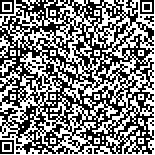| 引用本文: | 黄蓉,吝思琪,王爱民,顾志峰,石耀华,刘春胜.澄迈马袅湾网箱养殖区及周边海域大型底栖生物调查[J].海洋科学,2021,45(1):92-99. |
| |
|
| |
|
|
| 本文已被:浏览 1015次 下载 758次 |

码上扫一扫! |
|
|
| 澄迈马袅湾网箱养殖区及周边海域大型底栖生物调查 |
|
黄蓉1,2,3, 吝思琪1,2, 王爱民1,2, 顾志峰1,2, 石耀华1,2, 刘春胜1,2
|
|
1.海南大学 南海海洋资源利用国家重点实验室, 海口 570228;2.海南大学 海洋学院, 海口 570228;3.海南南海海岸工程与生态环境研究所, 海口 571199
|
|
| 摘要: |
| 本研究分别于2019年7月(夏季)和12月(冬季)对澄迈马袅湾网箱养殖区及周边海域的大型底栖生物进行调查。结果表明,两次调查共采集鉴定到55种生物,其中夏季31种,主要分布在邻近区;冬季33种,主要分布在养殖区和邻近区。夏季航次,底栖生物在养殖区、邻近区和对照区的栖息密度分别为30.55 ind/m2、40.74 ind/m2和29.63 ind/m2,生物量分别为14.36 g/m2、6.28 g/m2、6.58 g/m2;冬季航次,三个海区底栖生物栖息密度分别为55.56 ind/m2、46.67 ind/m2和27.78 ind/m2,生物量分别为7.29 g/m2、6.20 g/m2和0.22 g/m2。夏季优势种主要为绒毛细足瓷蟹和纽虫;冬季优势种主要为豆形短眼蟹、梳鳃虫、纽虫和哈氏美人虾。夏季养殖区、邻近区和对照区大型底栖生物多样性指数(H')分别为1.40、2.06和1.46;冬季分别为2.16、1.59和0.94。综上分析,网箱养殖产生的残饵和鱼类粪便,对养殖区及邻近海域底栖生物分布产生一定影响,且其群落结构与区域和季节存在较强相关性。 |
| 关键词: 马袅湾 热带海域 网箱养殖 底栖生物 多样性指数 |
| DOI:10.11759/hykx20200713004 |
| 分类号:X835 |
| 基金项目:国家重点研发计划项目(2018YFD0900704),院士团队创新中心项目(HD-YSZX-202011) |
|
| Investigation of macrobenthos of cage culture and the adjacent sea area in Maniao Bay, Chengmai |
|
HUANG Rong1,2,3, LIN Si-qi1,2, WANG Ai-min1,2, GU Zhi-feng1,2, SHI Yao-hua1,2, LIU Chun-sheng1,2
|
|
1.Key Laboratory of Tropical Biological Resources of Ministry of Education, Hainan University, Haikou 570228, China;2.Ocean College, Hainan University, Haikou 570228, China;3.Hainan South China Sea Institute of Coastal Engineering and Ecological Environment, Haikou 571199, China
|
| Abstract: |
| The macrobenthos in a cage fish culture (CF) and in the adjacent (AD) and control (C) sea areas of Maniao Bay, Chengmai were investigated in July (summer) and December (winter) 2019. According to two surveys, 55 species were identified with 30 species in summer, primarily in the AD area, and 33 species in winter, primarily in the CF and AD areas. The habitat density of the CF, AD, and C sea areas in summer were 30.55, 40.74, and 29.63 ind/m2, respectively; their biomasses were 14.36, 6.28, and 6.58 g/m2, respectively. In winter, the habitat density of the CF, AD, and C sea areas were 55.56, 46.67, and 27.78 ind/m2, respectively; their biomasses were 7.29, 6.20, and 0.22 g/m2, respectively. The dominant species were Raphidopus cilitus and Nemertea sp. in summer and Xenophthalmus pinnotheroides, Terebellides stroemii, Nemertea sp., and Callianassa harmandi in winter. Moreover, the macrobenthic biodiversity index (H') of the CF, AD, and C sea areas in summer were 1.40, 2.06, and 1.46, respectively. The indices were of the CF, AD, and C sea areas in winter were 2.16, 1.59, and 0.94, respectively. In conclusion, the sediment of bait and fish metabolites produced through the cage fish culture influenced the distribution of the macrobenthos, and strong correlations were observed between community structure and region and season. |
| Key words: Maniao Bay Tropical sea area Cage culture Macrobenthos Biodiversity index |
|
|
|
|
|
|
